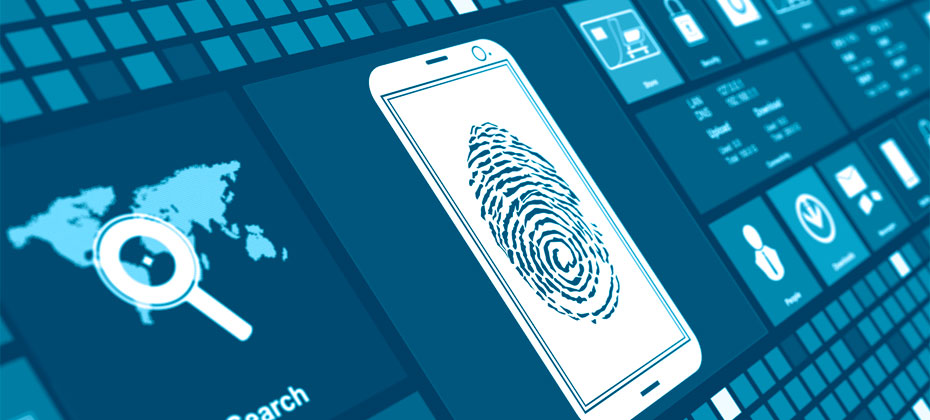Tag: fraud

This post was updated in 2022. Fraud prevention can seem like a moving target. Criminals often shift from one scheme to the next, forcing organizations to play catch up to protect consumers’ identities and funds. But with the right technology, it’s possible to implement a fraud solution that provides protection and enhances the consumer journey. The pandemic fraud boom Government stimulus funds, COVID-19 testing and the loosening of business controls were a boon for criminals and levied an immense cost against businesses and consumers. Consumer fraud losses rose to $3.3 billion in 2020, up from $1.8 billion in 2019. The rapid increase in digital activity had two significant impacts. First, it shifted new account applications to the digital channel, where increased anonymity favors fraudsters by creating an environment where identity thieves could hide among the immense volume of applicants and monetize stolen personally identifiable information (PII). Second, it fueled account takeover (ATO) attacks by introducing digital “newbies” with unsophisticated password habits and limited ability to recognize and protect themselves from malware or social engineering, making them easy targets for credential theft. The return of old-school fraud Now that businesses and consumers are growing wise to some of the fraud schemes brought on by the COVID-19 pandemic, criminals are turning to new avenues, including tried-and-true methods like account opening and ATO fraud. New account fraud is expected to cost U.S. financial institutions $3.5 billion in 2021 alone. Fraud organizations will take the PII available and match it with automated tools to increase their efficiency and success rates while continuing with phishing and other schemes to gain new information that can fuel further attacks. Building a fraud solution Staying ahead of fraudsters may feel like a losing proposition but equipped with the proper fraud controls, you can enhance the customer experience, increase operational efficiency and protect against developing fraud schemes. With a fraud solution that uses multiple tools in concert, it’s possible to recognize, verify and holistically risk assess most consumers that pass through your portfolio. The right platform — ideally one that can call upon different services to perform each job — will enable your organization to flag suspicious activity, increase insight into large-scale attacks, track risky users and break down traditional internal silos. By coordinating efforts and adding multiple touchpoints to run both in the foreground and background, you can ensure the right friction is applied at the right time without diminishing the end-user experience. In fact, by improving your recognition tools, you can make the experience for recognized, legitimate customers even easier. To learn more about the potential impacts of traditional fraud and how your organization can leverage a fraud prevention solution to achieve your retention and growth goals, read our latest white paper or request a call. Read white paper Schedule a call

Previously, the Global Identity and Fraud Report called for businesses to meet consumer expectations for online recognition and security while improving the digital experience. Organizations have answered this call with investments and new initiatives, but the fraud risk persists and consumers are relying on businesses to protect them. In our latest report, we explore the issues associated with siloed recognition processes, consumer expectations and preferences, and effective risk strategies. We surveyed more than 6,000 consumers and 1,800 businesses worldwide about this connection for our 2022 Global Identity and Fraud Report. This year’s report dives into: How online security yields engagement and trust with today’s digital consumers The role of businesses in protecting online consumers, and the associated benefits The current opportunity for businesses to implement multiple identity and fraud solutions The role that orchestration and outsourcing play in helping companies prevent fraud To earn consumer trust and loyalty, organizations need to leverage automated solutions to identify and protect consumers across their online journeys while providing seamless recognition and low-friction fraud prevention with a robust and flexible fraud platform. To learn more about our findings and how to implement an effective solution, download Experian’s 2022 Global Identity and Fraud Report. Read the report Review your fraud strategy

Cryptocurrency scams are on the rise as digital currencies gain popularity. The decentralized nature of these currencies makes them equally attractive to both legitimate consumers and fraudsters. Businesses may find themselves in a difficult position as they seek to prevent cryptocurrency-related fraud and help protect consumers. What are cryptocurrency scams? Cryptocurrencies are virtual currencies often based on and secured by blockchain technology. However, this does not always translate into security for the individual consumer. Many individuals fall victim to either cryptocurrency investment scams or cryptocurrency theft. Cryptocurrencies are not yet well-regulated or backed by a sovereign entity, leaving consumers open to threats when purchasing funds. The deregulated nature of the currencies makes it easy for scammers to build what appear to be legitimate cryptocurrency projects before disappearing, similar to pump-and-dump stock schemes. Additionally, scammers will perpetrate romance or other relationship-based scams and convince the victim to send them funds in cryptocurrency form. Cryptocurrency theft follows a few traditional fraud patterns: The fraudster may use phishing or social engineering to steal credentials. A crime ring might leverage malware or keystroke loggers to do the same thing. A scammer might present a “reward” to an unsuspecting consumer and require access to their wallet in order to “gift” the reward. Scammers consistently find new ways to trick unsuspecting consumers, including a recent scam relying on QR codes to steal funds converted to cryptocurrency via an ATM. Other common scams utilize imposter websites, fake mobile apps, bad tweets, or scamming emails to steal information and funds. The impact of scams on consumers According to the FTC, investment cryptocurrency scam reports have skyrocketed, with nearly 7,000 people reporting losses totaling more than $80 million from October 2020 to March 2021, with a media loss of $1,900. In 2020 the Better Business Bureau Scam Tracker Risk Report ranked cryptocurrency scams as the seventh riskiest. In 2021, they jumped to the second riskiest scam. In Michigan alone 31 cryptocurrency scams were reported from January 2020 to March 2022, with reported loses from $350 all the way to $41,000. The impact of scams on businesses While the true impact of cryptocurrency scams on businesses is hard to measure, it’s easy to identify several areas for concern. First is the opportunity for the theft of personally identifiable information (PII) during a fraudulent cryptocurrency transaction. Once fraudsters have stolen funds, they may also funnel them through a legitimate business and turn them into a regulated form of currency for easy of use. Businesses with legitimate cryptocurrency interactions may also suffer from spoofed apps or websites, causing reputational damage when consumers are taken in by a scam. Preventing the fallout from scams As companies debate accepting cryptocurrency as a form of payment, it’s important to consider that funds may be stolen or accessed by a malicious party. One way to protect your organization is to have a strong device identification strategy that can help ensure the entity accessing an account and the funds within is the true owner. By layering in this protection with other fraud defenses, businesses can be better prepared as consumer payment preferences shift. Additionally, financial institutions and other organizations should keep consumers informed about how to protect their own data and signs of scams. To learn more about how Experian is helping businesses develop and maintain effective fraud and identity solutions, visit us or request a call. And keep an eye out for additional in-depth explorations of our Future of Fraud Forecast. Request a call Future of Fraud Forecast

Experian recently announced Experian Identity and published an advertorial in American Banker outlining the integrated approach to identity that recognizes the full breadth of the company’s authoritative data solutions that help businesses better connect with their consumers in more personalized, meaningful and secure ways. The efforts address the rapidly changing definition and landscape of identity and take on the importance and needs for identity which span across the entire customer journey. From marketing to a specific consumer’s needs, to facilitating a friction-right customer experience, to protecting personal information. As such, there’s a gap for single-partner providers to help businesses navigate this change, while also putting the needs of the consumer first. “Identity data sets are constantly growing with inputs from new interactions. Many future sources of data have yet to be even conceived or developed,” said Kathleen Peters, Chief Innovation Officer, Experian Decision Analytics. “Staying ahead of the identity market curve is vital, and it requires building and continually evolving an enterprise-scale identity solution that interconnects with your own unique data and systems to create attribute-rich profiles of your customers that work across any identity application. That’s Experian Identity.” Experian Identity underscores the need businesses have to respond to increasing identity needs with interconnected, scalable technology, products and services that optimize the consumer experience. While the integrated approach announcement is new, the capability is not. Experian has been trusted for decades to secure individuals’ identity around the most important decisions in their lives – think purchasing a car or home, being identified at the doctor’s office, and more. As such, consumers remain at the center of every action. Experian Identity offers identity resolution, verification, authentication and protection, and fraud management solutions that include first- and third-party fraud, account takeover, credit card verification, identity resolution and restoration, risk-based authentication, synthetic identity protection and more. Additionally, we’ve included a special blog post introducing Experian’s identity capabilities from Kathleen Peters on the Experian Global News Blog and additional coverage. Stay tuned for more updates. Experian Global News Blog - Making Identities Personal: Experian Helps Businesses Build Consumer Trust American Banker – Making Identities Personal: Building Trust and Differentiating Your Brand Experian White Paper - Making Identities Personal For more information about Experian Identity, visit www.experian.com/identity-solutions.

Experian’s latest Global Insights Report found that more than half of consumers have increased their online spending in the last three months, and 50% say it will increase in the next three months. Life online is here to stay, and consumer expectations have shifted, giving businesses and opportunity to sink or swim when building trust and gaining loyalty. This spring, Experian surveyed 6,000 consumers and 2,000 businesses across all industries to learn more about how, why, and where consumers are interacting with businesses online. Our research found that: Experience is top of mind, with 81% of consumers saying that a positive online experience makes them think more highly of a brand Digital payment options are on the rise with 62% of consumers using mobile wallets and 57% considering buy now, pay later as a replacement for their credit card Security is still a big factor, but 73% of consumers say the onus is on businesses to protect them online Download the report to get all the latest insights into consumer sentiment and how recent changes are impacting business priorities and investments. Download the report

Rewards are among the most appealing features of any credit card. While upfront benefits, like sign-up bonuses and cashback, are most influential in card acquisition, ancillary benefits, like fraud and identity protection, can amplify a card’s overall value.1 Credit card fraud ranked as the second most common form of identity theft in 2021,2 and is expected to become even more frequent as consumers continue to bank and shop online.3 42% of consumers are concerned for the safety of their banking and shopping transactions. With digital identity theft and fraud on the rise, it’s no surprise that safety measures are “very” or “extremely” important to consumers when deciding between different credit cards.4 In response, many card issuers have started to market their security and protection-related benefits more frequently to better capitalize on their cards’ value to consumers. The ways they’ve highlighted these benefits include: A fraud protection campaign From spotlighting their fraud protection benefits in card welcome kits to providing privacy tips on social media, credit card issuers have crafted compelling campaigns to demonstrate their commitment to protecting their customers from fraud and identity theft. In turn, issuers can differentiate their cards from the competition and improve response rates. Reminders about their fraud prevention efforts Issuers have also sent out ongoing reminders outlining the protections their credit cards offer, such as credit monitoring services 5 that notify cardholders of suspicious activity on their credit report. By consistently promoting their efforts to keep their customers’ accounts and data safe, issuers can earn their cardholders’ trust, build loyalty and drive card usage. While benefits like cashback and travel points can help with card acquisition, fraud and identity protection benefits can help drive long-term customer relationships, especially now that card fraud is becoming a growing concern.6 To learn more about how businesses have worked to meet the consumer demand for secure interactions, check out our 2021 Global Identity and Fraud Report. Learn more 1Jonathan O'Connor. "Most Consumers Aren't Aware of Their Credit Cards' Ancillary Benefits. How Does This Impact Card Acquisition and Usage?" TSYS, January 2019 2FTC. "Consumer Sentinel Network" Data Book, 2021 3April Berthene. "Coronavirus pandemic adds $219 billion to US ecommerce sales in 2020-2021" Digital Commerce 360, March 2022 4"Consumers Consider as Many as Six Factors When Choosing Credit Card" PYMTS.com, December 2021 5David McMillin. "Identity theft is a major problem, but these 5 credit card protection programs can help keep you safe" Business Insider, June 2021 6"New FICO Survey Finds Overconfidence Could Put US Consumers at Risk From Scams" Business Wire, February 2022

Experian’s in-person Vision conference returns next Monday, April 11 in Los Angeles, Calif. The event is known for premier thought leadership, net-new insights and the latest and greatest in technology, innovation and data science. This year’s agenda promises to have intentional discussions around tomorrow’s trending topics including financial inclusion, buy now pay later, open banking, the future of fraud, alternative data strategies, and much more. A few spotlight sessions include: Top trends including the future application of the cloud and emerging technologies, emerging regulatory legislation and the broader implications and opportunities of DeFi. A deep dive into strategies around the targeting/marketing revolution and how to deliver in the post-COVID-19 market environments and bolster financial inclusion decisions. An introduction to Experian’s Buy Now Pay Later BureauTM, the industry’s first and only solution designed to address the needs of consumers, BNPL providers, financial institutions and regulators alike. A roundup of sessions addressing innovation in action spanning from real-time verifications, to data-driven automation, and unified platforms from data to deployment to decisioning. Several sessions highlighting future-looking strategies and solutions that leverage alternative data that can increase conversion rates while concurrently reducing risk. Multiple sessions centered on the rapidly changing identity environment and combatting emerging fraud threats. The event will also include a Tech Showcase, where attendees can get a taste of tomorrow today with more than 20 demos and the latest innovations at their fingertips. And, as always, the event features marquee keynote speakers sure to inspire. This year’s featured speakers are Dr. Mohamed A. El-Erian, President of Queens’ College, Cambridge, Chief Economic Advisor at Allianz, and Former CEO and Co-Chief Investment Officer of PIMCO; Allyson Felix, Olympic Gold Medalist, co-founder of Saysh, a footwear and lifestyle brand for women, and Right to Play and Play Works ambassador; and the closing keynote will feature actor, investor, entrepreneur and philanthropist, Ashton Kutcher. Stay tuned for additional highlights and insights on our social media platforms throughout the course of the conference. Follow Experian Insights on Twitter and LinkedIn.

With consumers continuing to take a digital-first approach to everything from shopping to dating and investing, fraudsters are finding new and innovative ways to commit fraud. To help businesses anticipate and prepare for the road ahead, we created the 2022 Future of Fraud Forecast. Here are the fraud trends we expect to see over the coming year: Buy Now, Pay Never: Buy now, pay later lenders will see an uptick in identity theft and synthetic identity fraud. Beware of Cryptocurrency Scams: Fraudsters will set up cryptocurrency accounts to extract, store and funnel stolen funds, such as the billions of stimulus dollars swindled by criminals. Double the Trouble for Ransomware Attacks: Fraudsters will not only ask for a hefty ransom to cede control back to the companies they’ve hacked but also steal and leverage data from the hacked company. Love, Actually?: Romance scams will continue to see an uptick, with fraudsters asking victims for money or loans to cover fabricated travel costs, medical expenses and more. Digital Elder Abuse Will Rise: Older consumers and other vulnerable digital newbies will be hit with social engineering and account takeover fraud. “Businesses and consumers need to be aware of the creativity and agility that fraudsters are using today, especially in our digital-first world,” said Kathleen Peters, Chief Innovation Officer at Experian Decision Analytics in North America. “Experian continues to leverage data and advanced analytics to develop innovative solutions to help businesses prevent fraudulent behavior and protect consumers.” To learn more about how to protect your business and customers from rising fraud trends, download the Future of Fraud Forecast and check out Experian’s fraud prevention solutions. Future of Fraud Forecast Read Press Release

Experian’s newest Global Insights Report found that consumers are online 25% more today than they were just a year ago, highlighting the importance of the digital customer experience. To acquire customers and retain their loyalty, businesses need to focus on improving the online experience, preventing fraud, and managing credit risk. This September, Experian surveyed 3,000 consumers and 900 businesses across all industries to explore business priorities and recent changes in consumer activities. Many businesses and consumers are reportedly feeling more economically stable now than they were a year ago. As consumers resume spending the digital customer experience becomes even more paramount – requiring businesses to invest in scalable software solutions that will accurately assess credit risk and meet ever-changing needs and priorities. Our research found that: 42% of consumers have increased concern for the safety of banking and shopping transactions Business adoption of advanced analytics has increased over last year, and adoption of artificial intelligence is up from 69% to 74% Consumers are more likely to share their personal data if it improves their experience, with 56% willing to share their contact information The top three consumer priorities continue to be security, privacy and convenience Download the report to get all the latest insights into consumer desires and business behaviors as we move further through the digital evolution. Download the report

Over the last year and a half, strong trends emerged in how businesses and consumers interact online - specifically when validating identities and preventing fraud. We initially explored these trends at a global level, and now we've explored U.S.-specific insights into online security, the customer experience, and digital activities and operations. Download the North America findings report to learn more about business and consumer fraud and identity trends impacting the way we live, work, and interact. Review your fraud strategy

Lately, I’ve been surprised by the emphasis that some fraud prevention practitioners still place on manual fraud reviews and treatment. With the market’s intense focus on real-time decisions and customer experience, it seems that fraud processing isn’t always keeping up with the trends. I’ve been involved in several lively discussions on this topic. On one side of the argument sit the analytical experts who are incredibly good at distilling mountains of detailed information into the most accurate fraud risk prediction possible. Their work is intended to relieve users from the burden of scrutinizing all of that data. On the other side of the argument sits the human side of the debate. Their position is that only a human being is able to balance the complexity of judging risk with the sensitivity of handling a potential customer. All of this has led me to consider the pros and cons of manual fraud reviews. The Pros of Manual Review When we consider the requirements for review, it certainly seems that there could be a strong case for using a manual process rather than artificial intelligence. Human beings can bring knowledge and experience that is outside of the data that an analytical decision can see. Knowing what type of product or service the customer is asking for and whether or not it’s attractive to criminals leaps to mind. Or perhaps the customer is part of a small community where they’re known to the institution through other types of relationships—like a credit union with a community- or employer-based field of membership. In cases like these, there are valuable insights that come from the reviewer’s knowledge of the world outside of the data that’s available for analytics. The Cons of Manual Review When we look at the cons of manual fraud review, there’s a lot to consider. First, the costs can be high. This goes beyond the dollars paid to people who handle the review to the good customers that are lost because of delays and friction that occurs as part of the review process. In a past webinar, we asked approximately 150 practitioners how often an application flagged for identity discrepancies resulted in that application being abandoned. Half of the audience indicated that more than 50% of those customers were lost. Another 30% didn’t know what the impact was. Those potentially good customers were lost because the manual review process took too long. Additionally, the results are subjective. Two reviewers with different levels of skill and expertise could look at the same information and choose a different course of action or make a different decision. A single reviewer can be inconsistent, too—especially if they’re expected to meet productivity measures. Finally, manual fraud review doesn’t support policy development. In another webinar earlier this year, a fraud prevention practitioner mentioned that her organization’s past reliance on manual review left them unable to review fraud cases and figure out how the criminals were able to succeed. Her organization simply couldn’t recreate the reviewer’s thought process and find the mistake that lead to a fraud loss. To Review or Not to Review? With compelling arguments on both sides, what is the best practice for manually reviewing cases of fraud risk? Hopefully, the following list will help: DO: Get comfortable with what analytics tell you. Analytics divide events into groups that share a measurable level of fraud risk. Use the analytics to define different tiers of risk and assign each tier to a set of next steps. Start simple, breaking the accounts that need scrutiny into high, medium and low risk groups. Perhaps the high risk group includes one instance of fraud out of every five cases. Have a plan for how these will be handled. You might require additional identity documentation that would be hard for a criminal to falsify or some other action. Another group might include one instance in every 20 cases. A less burdensome treatment can be used here – like a one-time-passcode (OTP) sent to a confirmed mobile number. Any cases that remain unverified might then be asked for the same verification you used on the high-risk group. DON’T: Rely on a single analytical score threshold or risk indicator to create one giant pile of work that has to be sorted out manually. This approach usually results in a poor experience for a large number of customers, and a strong possibility that the next steps are not aligned to the level of risk. DO: Reserve manual review for situations where the reviewer can bring some new information or knowledge to the cases they review. DON’T: Use the same underlying data that generated the analytics as the basis of a review. Consider two simplistic cases that use a new address with no past association to the individual. In one case, there are several other people with different surnames that have recently been using the same address. In the other, there are only two, and they share the same surname. In the best possible case, the reviewer recognizes how the other information affects the risk, and they duplicate what the analytics have already done – flagging the first application as suspicious. In other cases, connections will be missed, resulting in a costly mistake. In real situations, automated reviews are able to compare each piece of information to thousands of others, making it more likely that second-guessing the analytics using the same data will be problematic. DO: Focus your most experienced and talented reviewers on creating fraud strategies. The best way to use their time and skill is to create a cycle where risk groups are defined (using analytics), a verification treatment is prescribed and used consistently, and the results are measured. With this approach, the outcome of every case is the result of deliberate action. When fraud occurs, it’s either because the case was miscategorized and received treatment that was too easy to discourage the criminal—or it was categorized correctly and the treatment wasn’t challenging enough. Gaining Value While there is a middle ground where manual review and skill can be a force-multiplier for strong analytics, my sense is that many organizations aren’t getting the best value from their most talented fraud practitioners. To improve this, businesses can start by understanding how analytics can help group customers based on levels of risk—not just one group but a few—where the number of good vs. fraudulent cases are understood. Decide how you want to handle each of those groups and reserve challenging treatments for the riskiest groups while applying easier treatments when the number of good customers per fraud attempt is very high. Set up a consistent waterfall process where customers either successfully verify, cascade to a more challenging treatment, or abandon the process. Focus your manual efforts on monitoring the process you’ve put in place. Start collecting data that shows you how both good and bad cases flow through the process. Know what types of challenges the bad guys are outsmarting so you can route them to challenges that they won’t beat so easily. Most importantly, have a plan and be consistent. Be sure to keep an eye out for a new post where we’ll talk about how this analytical approach can also help you grow your business. Contact us

Earlier this year, we shared our predictions for five fraud threats facing businesses in 2021. Now that we’ve reached the midpoint of the year and economic recovery is underway, we’re taking another look at how these threats can impact businesses and consumers. Putting a Face to Frankenstein IDs: Synthetic identity fraudsters will attempt to bypass fraud detection methods by using AI to combine facial characteristics from different people to form a new identity. Overexposure: As many as 80% of SSNs may have been exposed on the dark web, creating opportunities for account application fraud. The Heist: Surges in data breaches, advances in automation, expanded online banking services and vulnerabilities exposed from social engineering mistakes have lead to rises in account takeover fraud. Overstimulated: Opportunistic fraudsters may take advantage of ongoing relief payments by using stolen data from consumers. Behind the Times: Businesses with lackluster fraud prevention tools and insufficient online security technology will likely experience more attacks and suffer larger losses. To learn more about upcoming fraud threats and how to protect your business, download our new infographic and check out Experian’s fraud prevention solutions. Download infographic Request a call

As stimulus-generated fraud wanes, we anticipate a return of more traditional forms of fraud, including account opening fraud. As businesses embrace the digital evolution and look ahead to responsible growth, it’s important to balance the customer experience with the risks associated with account opening fraud. Preventing account opening fraud requires a layered fraud and identity management strategy that allows you to approve good customers while keeping criminals out. With the right tools in place, you can optimize the customer experience while still keeping risk low. Download infographic Review your fraud strategy

Recently, I wrote about how Experian is assisting NASWA (National Association of State Workforce Agencies) with identity verification to help mitigate the spike in fraudulent unemployment insurance claims. Because of this I was not all that surprised when I found a letter in my mailbox from the Texas Workforce Commission with a fraudulent claim using my identity, inspiring me to follow up on this topic with a focus on fraud prevention best practices. Identity theft is on the rise According to Experian data analysis and a recent study on unemployment insurance fraud, at least 25% of new claims are a result of identity theft. This is 50 times higher than what we have traditionally seen in the highest ID theft fraud use case, new credit card applications, which generally amounts to less than 0.5% of new applications. Increasing digitization of the last few years—culminating in the huge leap forward in 2020—has resulted in a massive amount of information available online. Of that information, a reported 1.03 billion records were exposed between 2016 and 2020. There are currently approximately 330 million Americans, so on average more than three records per person have been exposed, creating an environment ripe for identity theft. In fact, a complete identity consisting of name, address, date of birth, and Social Security number (SSN) can be purchased for as little as $8. This stolen data is then often leveraged by both criminal rings who are able to perpetrate fraud on a large scale and smaller scale opportunists – like the ones in Riverside, CA leveraging access to identities of prison inmates. Fraud prevention through layered identity controls In the 20 years that I have been combatting ID theft both in the private and public sectors, I’ve learned that the most effective identity proofing goes beyond traditional identity resolution, validation, and verification. To be successful, you must take advantage of all available data and incorporate it into a layered and risk-based approach that utilizes device details, user behavior, biometrics, and more. Below, I outline three key layers to design an effective process for ID proofing new unemployment insurance claims. Layer 1: Resolve and Validate Identities Traditional identity data consists of the same basic information—name, address, date of birth, telephone number, and SSN—which is now readily available to fraudsters. These have been the foundation for ID proofing in the past and are still critical to resolving the identity in question. The key is to also include additional identity elements like email address and phone number to gain a more holistic view of the applicant. Layer 2: Assess Fraud Risk Determining an identity belongs to a real-life subject is not sufficient to mitigate the risk of ID theft associated with a new unemployment insurance claim. You must go beyond identity validation to assess the risk associated with their claim. Risk assessment risk falls into two categories – identity and digital risk. Identity Risk When assessing a claim, it’s important to check the identity for: Velocity: How often have you (or other states) seen the information being presented with this application? Has the information been associated with multiple identities? Recency of change: How long has the identity been associated with the contact information (phone, email, address, etc.)? Red flags: Has the subject been a recent victim of ID theft, or are they reported as deceased? Synthetic Identity: Are there signs that the identity itself is fictitious or manipulated and does not belong to a real-life person? Digital Risk Similar to the identity risk layer above, the device itself and how the subject interacts with the device are significantly important in identifying the likelihood a new claim is fraudulent. Device risk can be assessed by utilizing geolocation and checking for inconsistent settings or high-risk browsers, while behavioral risk might check for mouse movement, typing speed, or screen pressure. Layer 3: Verify Highest Risk Subjects The final stage in this process is to require additional verification for the highest risk claims, which helps to balance the experience of your valid subjects while minimizing the impact of fraud. Additional steps might include: Document verification: Scanning a government-issued ID (driver’s license, passport, or similar), which includes assessing for document security features and biometric comparison to the applicant. One-time passcode (OTP): It is key to deploy this sparingly only to phone numbers that have been associated with the subject for a significant time frame and incorporate checks to determine if it is at high risk (e.g., recently ported or forwarded). Knowledge-based verification (KBV): Leveraging non-public information from a variety of sources. By adding additional, context-based identity elements, it becomes possible to improve the three main objectives of most agencies’ identity proofing process – get good constituents through the first time, protect the agency and citizens from fraud, and deliver a smooth and secure customer experience in online channels. While there’s no quick fix to prevent unemployment insurance fraud, a layered identity strategy can help prevent it. Finding a partner that has a single, holistic solution empowers agencies to defend against unemployment insurance fraud while minimizing friction for the end-user, and preparing for future fraud schemes. To learn more about how you can protect your constituents and your agency from unemployment insurance fraud request a call today. Contact us

In today’s digital-first environment, fraud threats are growing in sophistication and scope. It’s critical for credit unions to not only understand the specific threats presented by life online, but to also be prepared with a solid fraud detection and prevention plan. Below, we’ve outlined a few fraud trends that credit unions should be aware of and prepared to address. 2021 Trends to Watch: Digitization and the Movement to Life Online Trend #1: Digital Acceleration As we look ahead to the rest of 2021 and beyond, we expect to see adoption of digital strategies nearing the top of credit unions’ list of priorities. Members’ expectations for their digital experience have permanently shifted, and many credit unions now have members using online channels who traditionally wouldn’t have. This has led to a change in the types of fraud we see as online activities increased in volume. Trend #2: First-Party Fraud is On the Rise First party fraud is on the rise – 43% of financial executives say that mule activity is up 10% or more compared to attack rates prior to the pandemic, according to Trace Fooshee, Senior Analyst for Aite Group, and we expect to see this number grow. The ability for credit unions to identify and segregate the “good guys” from “bad guys” is getting more difficult to discern and this detail is more important than ever as credit unions work to create frictionless digital experiences by using digital tools and strategies. Trend #3: Continual Uptick in Synthetic Identity Fraud We expect synthetic identity fraud (SID) to continue to rise in 2021 as cybercriminals become more sophisticated in the digital space and as members continue with their new digital habits. Additionally, fraudsters can use SIDs to bring significant damage and loss to credit unions through fraudulent checks, debit cards, person-to-person and automated clearing house (ACH) transactions. More and more, fraudsters are seen opening accounts and remaining very patient – using an account to build and nurture a trusted relationship with the credit union and then remain dormant for two years before ensuing in any sort of abuse. Once the fraudster feels confident that they can bypass authentication processes or avoid a new product vetting, oftentimes, they will take that opportunity to get easy access to all solutions credit unions have available and will abuse them all at once. There are no signs of fraud slowing, so credit unions will need to stay vigilant in their fraud protection and prevention plans. We’ve outlined a few tips for credit unions to help protect member data while reducing risk. The Fight Against Fraud: Four Key Tips Tip #1: Manage Each Fraud Type Appropriately Preventing and detecting fraud requires a multi-level solution. This can involve new methods for authenticating current and prospective members, as well as incorporating synthetic identity services and identity proofing throughout the member lifecycle. For example, credit unions should consider taking extra verification steps during the account opening process as a preventative measure to minimize SID infiltration and associated fraud losses. As credit unions continue down the path of digitization, it’s also important to add in digital signals and behavior-based verification, such as information about the device a consumer is logging in from to heighten defenses against bad actors. Tip #2: Be Resourceful In the wake of the COVID-19 pandemic, many have asked, “How should credit unions approach fraud prevention tactics when in-person contact is limited or unavailable?” In some cases, you might need to be willing to say no to requests or get creative and find other options. Sometimes, it takes leveraging current resources and using what’s readily available to allow for a binary decision tree. For example, if you’re suspicious of a dormant account that you think could be synthetic, call them, and ask yourself these questions: Did they answer? Was the phone still active? Send the account holder an email – did you get a reply? Is this a new member? Is this a new channel for the member? Could they have logged on to do this instead of calling the call center? Tip #3: Empower Members Through Education Members like to know that their credit unions are taking the necessary steps and applying the right measures to keep their data secure. While members might not want every detail, they do want to know that the security measures are there. Require the use of strong passwords, step-up authentication, and empower members with alerts, notifications, and card controls. Additionally, protect members by providing resources like trainings, webinars, and best practices articles, where they can learn about current cyber trends and how to protect their data. Tip #4: Trust Data Many credit unions rely on an employee’s decision to decide when to take action and what action to take. The challenge with this approach comes when the credit union needs to reduce friction for members or tighten controls to prevent fraud, because it’s extremely hard to know exactly what drove prior actions. A better alternative is to rely on scores and specific data. Tweaks to the scores or data points that drive actions allow credit unions to achieve the desired member experience and risk tolerance – just be sure to leverage internal experts help figure out those policies. By determining what conditions drive actions before the actions are taken (instead of doing it one case at a time) the decisions remain transparent and actionable. Looking for more insights around how to best position your credit union to mitigate and prevent fraud? Watch our webinar featuring experts from around the industry and key credit unions in this Fraud Insight Form hosted by CUES. Watch now Contact us